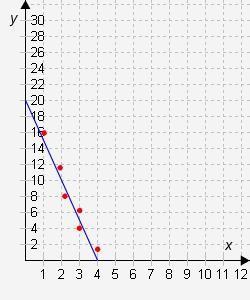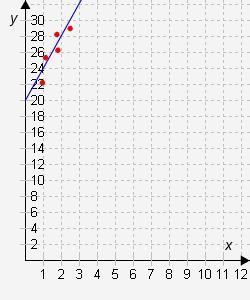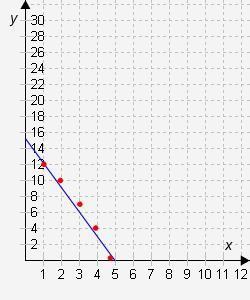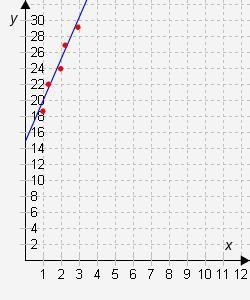
Mathematics, 27.06.2019 01:40 naleyah
Drag the tiles to the correct boxes to complete the pairs. not all tiles will be used. match the initial values and rates of change with the lines of best fit on the scatter plots. the initial value is 15, and the rate of change is 5. the initial value is 20, and the rate of change is 4. the initial value is 20, and the rate of change is -4. the initial value is 20, and the rate of change is -5. the initial value is 15, and the rate of change is -3.





Answers: 1


Another question on Mathematics

Mathematics, 21.06.2019 14:00
The axis of symmetry for the graph of the function f(x)=1/4^2+bx +10 is x=6. what is the value of b?
Answers: 1

Mathematics, 21.06.2019 18:30
For this option, you will work individually. the pythagorean theorem can be used in many real-world scenarios. part 1 write your own real-world scenario where the pythagorean theorem can be applied to find a missing piece. you may choose to write a problem that is two- or three-dimensional in nature. be sure that you will be able to draw a diagram of your scenario. write out your problem and submit it for part 1. be sure to end your scenario with a question. part 2 draw a diagram of the scenario you created in part 1. you may draw by hand and scan and upload your drawing or create a computer-generated drawing for submission. be sure to label all parts and dimensions of the drawing. part 3 solve the question that you posed in part 1. show all of your steps in answering the question. for this option, you will need to submit all three parts for full credit—your real-world problem and question, the diagram that you created, and your work solving the problem, showing all steps. * note that your instructor is looking for your own original idea. while it is acceptable to use the internet for research and inspiration, academic integrity policies apply.
Answers: 1

Mathematics, 21.06.2019 23:00
The height of a birch tree, f(x), in inches, after x months is shown in the graph below. how much does the birch tree grow per month, and what will be the height of the birch tree after 10 months? a. the birch tree grows 1 inch per month. the height of the birch tree will be 16 inches after 10 months. b. the birch tree grows 2 inches per month. the height of the birch tree will be 26 inches after 10 months. c. the birch tree grows 3 inches per month. the height of the birch tree will be 36 inches after 10 months. d. the birch tree grows 2 inches per month. the height of the birch tree will be 24 inches after 10 months.
Answers: 1

Mathematics, 21.06.2019 23:30
Answer each of the questions for the following diagram: 1. what type of angles are these? 2. solve for x. what does x equal? 3. what is the measure of the angles?
Answers: 1
You know the right answer?
Drag the tiles to the correct boxes to complete the pairs. not all tiles will be used. match the ini...
Questions

Computers and Technology, 14.07.2019 21:00

History, 14.07.2019 21:00

Computers and Technology, 14.07.2019 21:00



Social Studies, 14.07.2019 21:00

History, 14.07.2019 21:00

Mathematics, 14.07.2019 21:00

Computers and Technology, 14.07.2019 21:00

Mathematics, 14.07.2019 21:00



History, 14.07.2019 21:00

History, 14.07.2019 21:00


Mathematics, 14.07.2019 21:00



Social Studies, 14.07.2019 21:00



